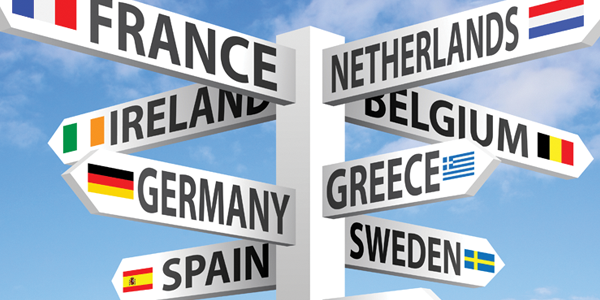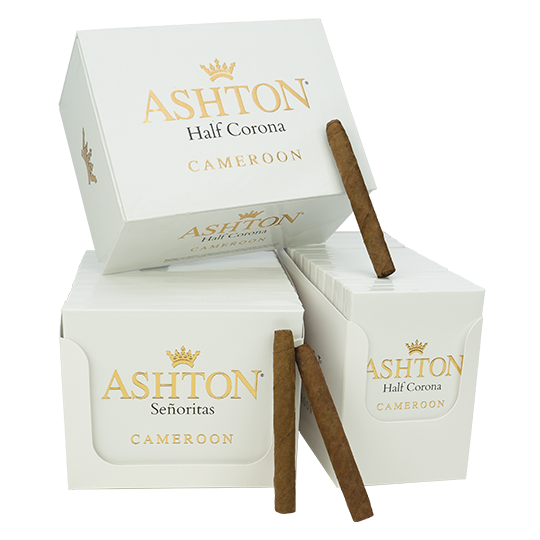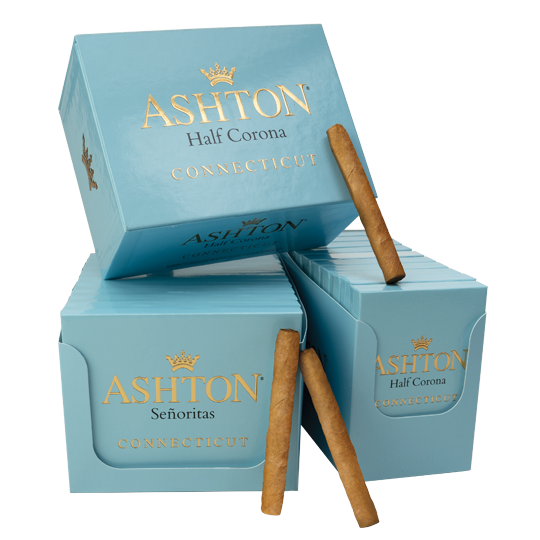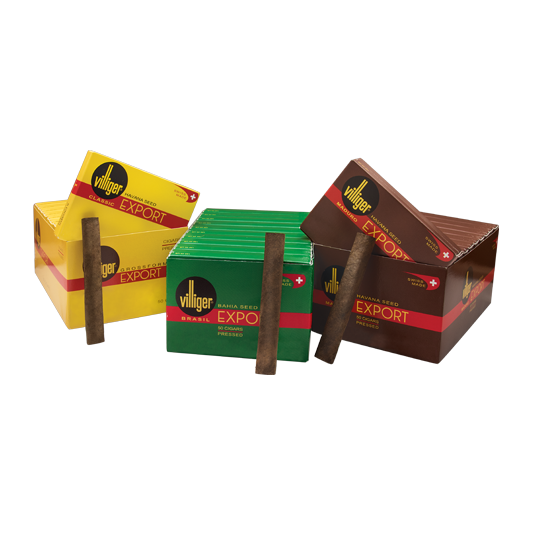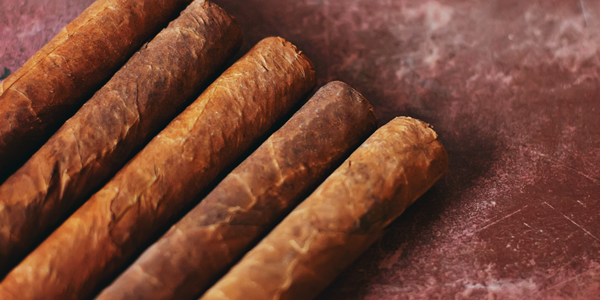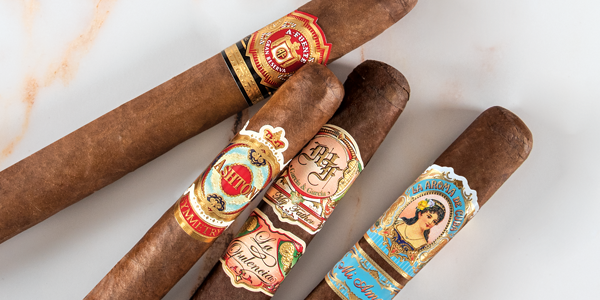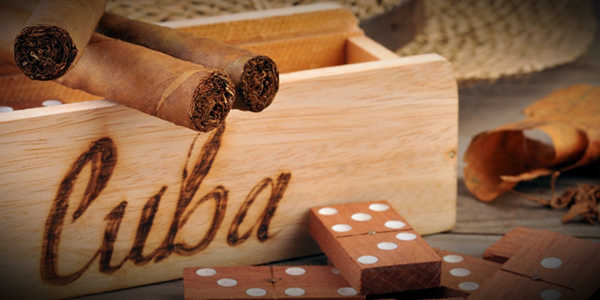European Cigars
Among my favorite places in the world is Madrid, Spain. The city is large and very cosmopolitan. The food is as good as anywhere in Europe, and maybe the world, especially if you love jamon (ham). Madrid also has one of my favorite cigar places, the Cava de Magallanes. More on that in a bit.
Europe is also a producer of cigars, mostly small dry-cured cigars. It’s best to understand that these are really European-style cigars as they are made with tobaccos grown almost anywhere other than Europe.
European Cigars
One of the advantages of dry-cured cigars is that they hold their quality at room temperature. It’s rare that they require humidification. They are often sold in cardboard boxes or metal tins of five or 10. These cigars are usually machine-made with short fillers and are 100 percent tobacco. They offer a quick smoke and are easy to carry.
Among the more popular brands for sale mainly in Europe are Agio, Café Crème and J. Cortes. Agio is best known for the Mehari’s line, offering three different blends, the Ecuador, Brazil, and Java. They come in packs of 10. Café Crème boasts of being the “world’s first small cigar.” Today, the cigar is known by the name Signature in Europe, but continues to use the same tobaccos from Java, Colombia, the Dominican Republic, and Italy. The wrappers are natural Java or Ecuadoran. J. Cortes is a brand owned by the same Belgian company, VCF, that makes the premium Oliva cigars. They come in blue tins or cardboard boxes, ranging from cigarillos to coronas made of 100 percent specially selected tobaccos. Packs of 10.
My favorite European style mini-cigars are also popular in the US.
Villiger Cigars
While the Swiss company, Villiger Cigars, has recently moved into the premium-cigar category, it’s most famous for its best-selling Villiger Export, still made in Switzerland. These machine-made, small, 4 x 37 cigars are sold in boxes of 50, each containing 10 removable sleeves carrying five cigars apiece. These box-pressed cigars come in three wrapper varieties, all fairly mild. They are made with Brazilian tobaccos and come in Brasil (Natural) and Maduro (both around $50). The Brasil is peppery and earthy. The Maduro has distinct notes of pepper, coffee, and chocolate with a profound zest. The Classic (about $60) with its Sumatra wrapper delivers considerable creaminess with hints of nuts and coffee.
Ashton Small Cigars
In addition to a world-renowned portfolio of handmade cigars, Ashton also produces a collection of small-format smokes with premium Dominican filler and a Cameroon or Connecticut Shade wrapper. They come in four sizes, ranging from the Cigarillos, 3.75 x 26, to the larger Half Corona, 4.125 x 37. These may be small, but they are full of flavor in a medium-strength cigar. Ashton Small Cigars Cameroon offer notes of cocoa, cedar, nutmeg, and black pepper. Ashton Small Cigars Connecticut are milder, with a profile formed by cashew, coffee, and almond, with a slightly spicy finish. They’re available in cubes between 50 and 200 cigars, with sleeves containing five cigars each.
The Toscano
Italy weighs in with its own version of a dry-cured cigar, the Toscano. This Italian cigar is made in Tuscany and Campania almost exclusively with Kentucky tobaccos. The filler is generally grown in different parts of Italy. The better wrapper is from the US. The Toscano is generally a stronger and more bitter cigar than its European counterparts.
A couple of Toscano-style cigars are made in the US, in Pennsylvania, by Avanti Cigar Company, with its Parodi and De Nobili brands using Kentucky tobaccos grown in different parts of the world.
Buying Cuban Cigars in Europe
Until recently, if you wanted a premium cigar in Europe, your choice was Cuban. Today, more non-Cuban brands are available, but Europe is arguably the best part of the world in which to buy Cuban cigars. You’re just not going to get any bargains. If I can make it work, on the way back to the United States from Europe, I fly through Amsterdam’s Schiphol Airport and visit the ExQuisite store. The selection is usually excellent. Late in 2019, the shop had the Cohiba 50 Aniversario humidor of 50 cigars, 7 x 60, which it sold for about $422,000. I have been lucky to find some hard-to-get cigars here. It’s worth a stop.
Cava de Magallanes, which translates into the cave of Magellan, is named for the street on which it’s located in Madrid and is open every day of the week. It’s one of several estancos (tobacconists) in Spain’s capital, but it’s one that has recently been expanded and carries non-Cuban cigars as well as the usual Cuban suspects. Last time I visited, in 2017, I purchased two boxes of 10 Montecristo No. 2s made in 2009. I’ve tried to ration them and maybe have a couple left. They’re among the best I’ve smoked.
If you visit London, which I consider an excellent and expensive source for the best Cuban cigars, there are many shops to visit, but my new favorite is easily the James J. Fox store in the basement of Harrod’s. It’s immensely comfortable and has an excellent ventilation system in the small lounge. A great place to wait for your friends to finish their shopping. Of course, you should also drop in on the original Fox shop at 19 St. James Street. It’s thought to have been there since the late 1700s under a different name, but merged with Fox in 1992. Not much inside has changed and it’s as much a museum as it is a cigar shop. And it has a “sampling lounge” so you can enjoy a cigar before deciding to buy a box or two.
If you’re thinking of waiting to buy Cuban cigars at Heathrow Airport on your way out of London, you’ll likely be disappointed in both the selection and prices. Buy in town.

